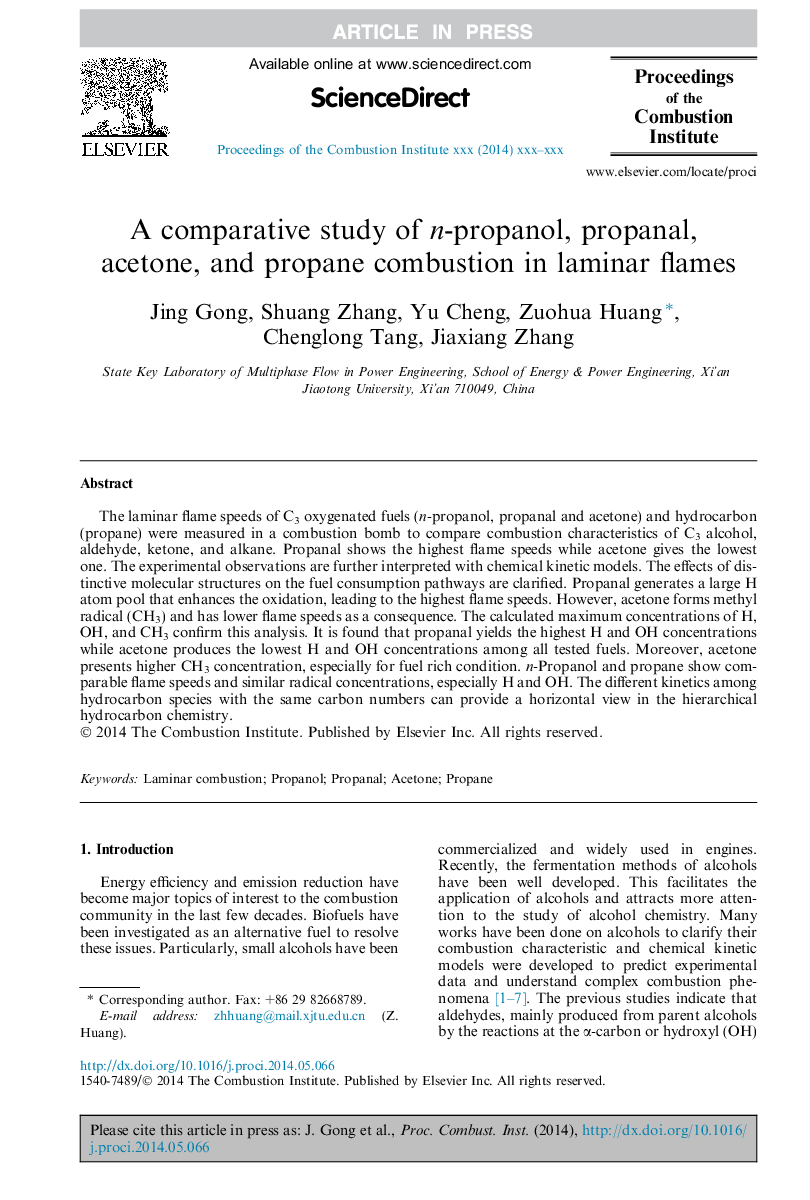| Article ID | Journal | Published Year | Pages | File Type |
|---|---|---|---|---|
| 6679368 | Proceedings of the Combustion Institute | 2015 | 7 Pages |
Abstract
The laminar flame speeds of C3 oxygenated fuels (n-propanol, propanal and acetone) and hydrocarbon (propane) were measured in a combustion bomb to compare combustion characteristics of C3 alcohol, aldehyde, ketone, and alkane. Propanal shows the highest flame speeds while acetone gives the lowest one. The experimental observations are further interpreted with chemical kinetic models. The effects of distinctive molecular structures on the fuel consumption pathways are clarified. Propanal generates a large H atom pool that enhances the oxidation, leading to the highest flame speeds. However, acetone forms methyl radical (CH3) and has lower flame speeds as a consequence. The calculated maximum concentrations of H, OH, and CH3 confirm this analysis. It is found that propanal yields the highest H and OH concentrations while acetone produces the lowest H and OH concentrations among all tested fuels. Moreover, acetone presents higher CH3 concentration, especially for fuel rich condition. n-Propanol and propane show comparable flame speeds and similar radical concentrations, especially H and OH. The different kinetics among hydrocarbon species with the same carbon numbers can provide a horizontal view in the hierarchical hydrocarbon chemistry.
Related Topics
Physical Sciences and Engineering
Chemical Engineering
Chemical Engineering (General)
Authors
Jing Gong, Shuang Zhang, Yu Cheng, Zuohua Huang, Chenglong Tang, Jiaxiang Zhang,
